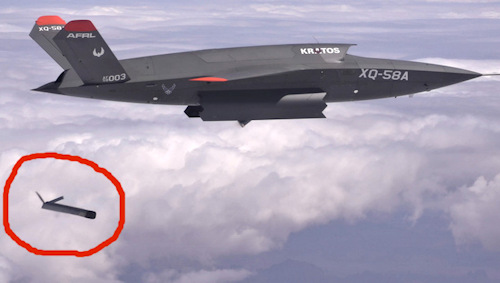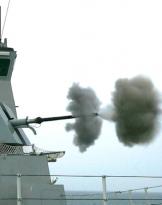In recent years, the development of autonomous aircraft systems (UAS) has surpassed all initiatives. Even in the recent conflict in Ukraine, these aircraft, commonly called drones, receive commands from their operator over a radio link, often hundreds of miles away.
Despite their flexibility, like all systems that do not have total human control, they can be disturbed by interference of various kinds from the enemy. This can lead to the blocking of the operation of the drone which can crash or, in uncertainty, land in the area. The most modern military drones are equipped with electronic countermeasure systems that allow them to operate even in situations of strong disturbances (such as the Turkish Bayraktar tb2 used by the Ukrainians against the Russians).
Today we are talking about a new family of UAS, ALTIUS (Air-Launched Tube-Integrated Unmanned System) produced by Area-I, an aerospace company based in the United States, specializing in the development of unmanned aircraft. They are certainly not the only ones on the market but the three models available, ALTIUS-500, 600 and 900, also lend themselves to operating from the sea.
Let's find out together

The smaller version, the ALTIUS-500, has a range of about two hours with a range of 160 km while the larger version of ALTIUS-900, weighing about 36 kg, has a range of 1.000 km with a autonomy of over 15 hours.
The intermediate model, the ALTIUS-600, has been specially developed to collect information in real time and can be launched from military aircraft, such as C-130A, P-3 Orion, AC-130J and UH-60 but also from civilian aircraft. , land vehicles and maritime platforms.
In the latter, but not a minor one, it can carry out various naval operations ranging from maritime surveillance to intelligence data collection (ISR and SIGINT).
What is making the difference?

Surely, the new drones have greater reliability and flexibility of use. In March 2021, an ALTIUS-600 drone was successfully launched into the air from an XQ-58A Valkyrie (photo), an experimental unmanned aerial combat aircraft (UCAV) designed and built by Kratos Defense & Security Solutions for the program LCASD (Low Cost Attritable Strike Demonstrator) of the United States Air Force, demonstrating not only its intelligence, surveillance and reconnaissance capabilities but being able to locate the enemy, transmitting tactical information in real time to the control center.
Altius 600 in flight
The ALTIUS-600 in flight has a wingspan of 2,54 meters and a gross weight of about 12 kg, so it is not particularly bulky. In addition, at the end of the mission it can be recovered, being able to land on any flat terrain.
During the exercise EDGE 21 (Experimental Demonstration Gateway Exercise), held in Utah, the US military demonstrated the possibility of launching an Altius 600 from a light vehicle.

Its launch can be done from different platforms (which makes it highly flexible).
After being ejected from the launch tube, the drone's wings open quickly and the operator can begin flying it via the remote control system. Alternatively, the drone can operate autonomously following a series of waypoint pre-programmed. This makes them less, or "not dependent", on control signals (which makes it difficult for third parties to disturb them).
During flight, the Altius 600 is propelled by a two-blade propeller mounted in the rear of the drone in configuration pusher. The cruising and maximum speeds are respectively 60 (about 111 km / h) and 90 knots (about 167 km / h) with a range of 440 km that allows missions of up to four hours to be conducted.
The drone, in its front section, carries a modular payload with a capacity of up to 3,17 kg (7 lbs).

The modularity allows an easy integration of the different on-board instruments such as, for example, the jamming (disturbance), intelligence, surveillance and reconnaissance (ISR and SIGINT) and electronic warfare (EW), equipped with sensors to acquire images and videos on the operational scene. Modularity allows you to replace the payload with an explosive head to hit targets of opportunity. Obviously by agreeing to lose the drone.
The program also includes integration with .50 caliber remote weapons.
AeroVironment is facing trials with a variant of its “kamikaze” Switchblade 600 missile system, following a $ 26 million contract awarded in April 2021.
On May 17, AeroVironment's Vice President of Tactical Missile Systems, Brett Hush, told Janes that an evolution of the Switchblade 600 will include a ten-month development program with the Naval Special Warfare Command of the United States, to experience launching from surface ships.
This capability will make it possible to give even smaller naval units an extremely useful capability in the field of maritime security.
Images: Northrop Grumman / US Army / AeroVironment
(article originally published on https://www.ocean4future.org)












